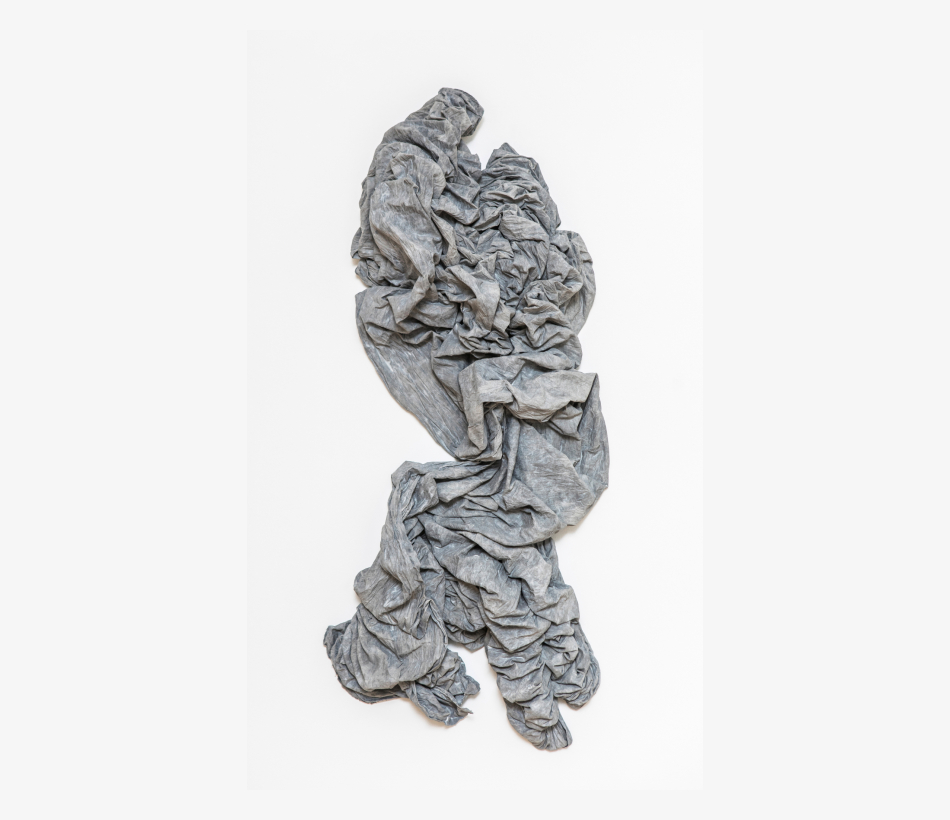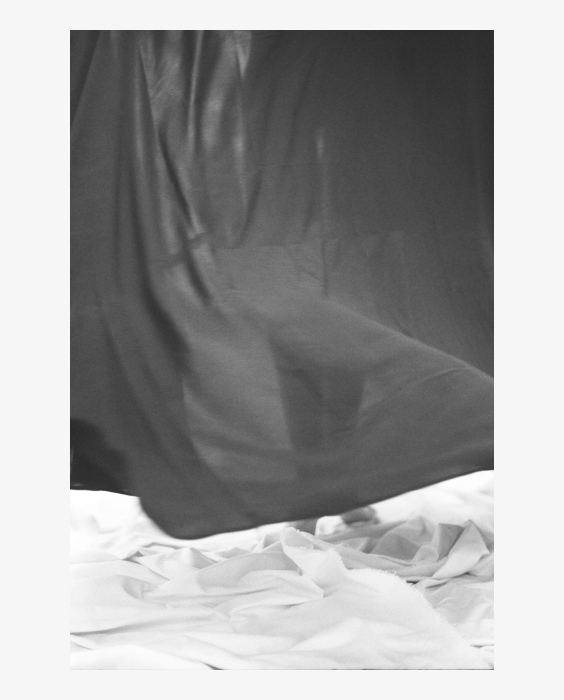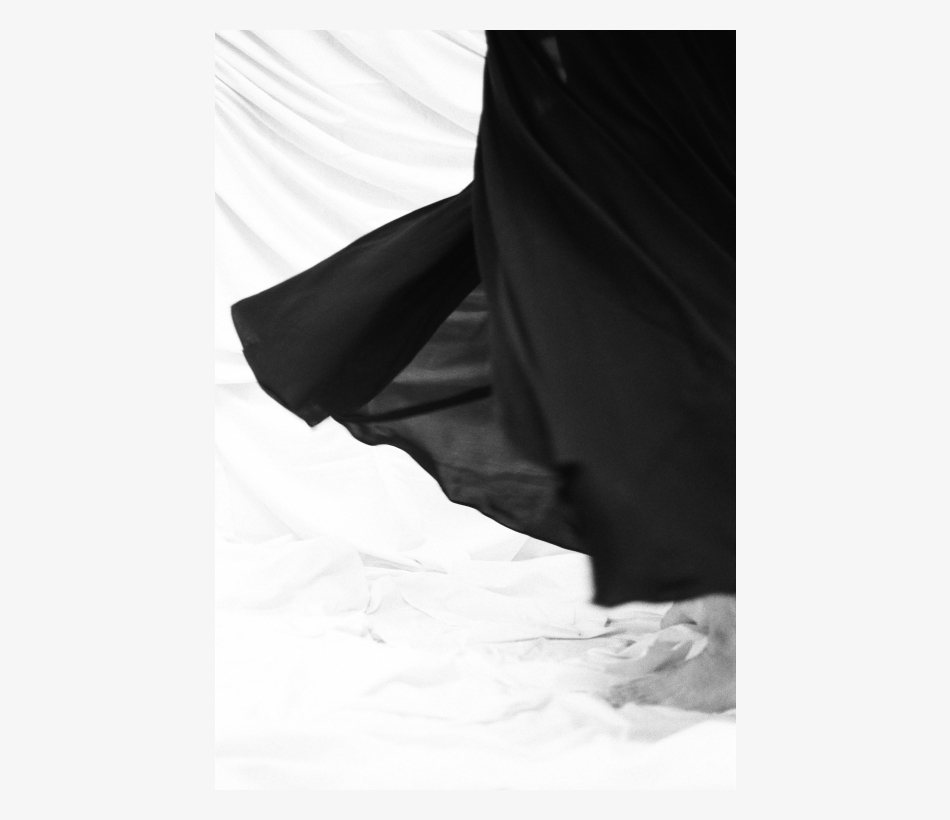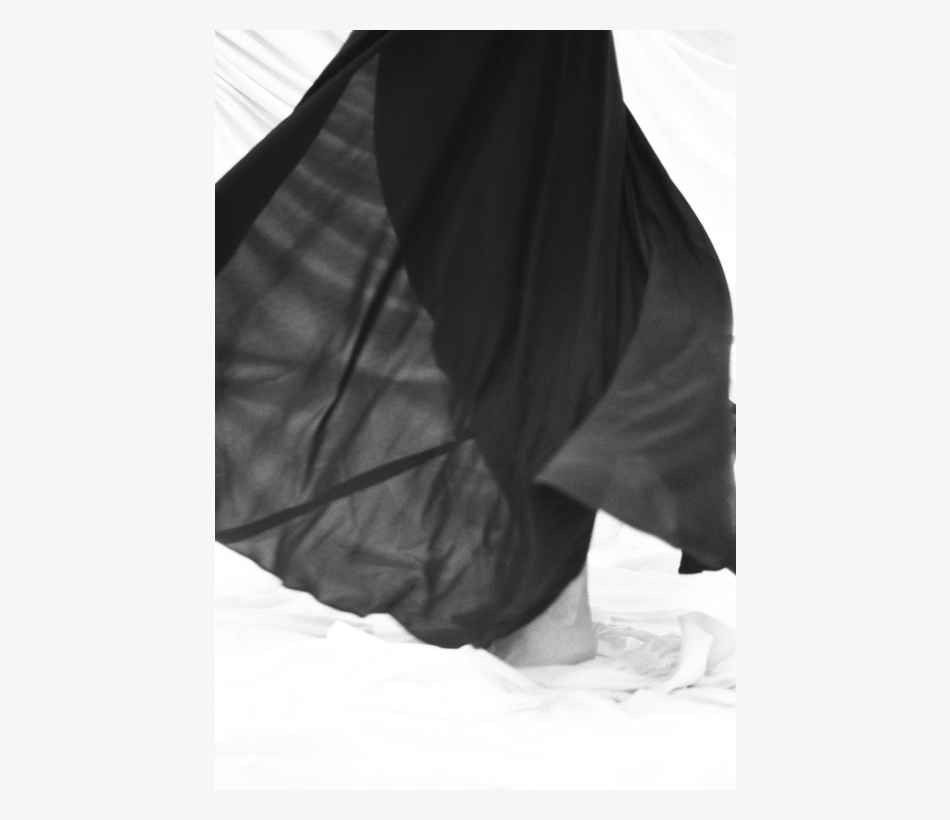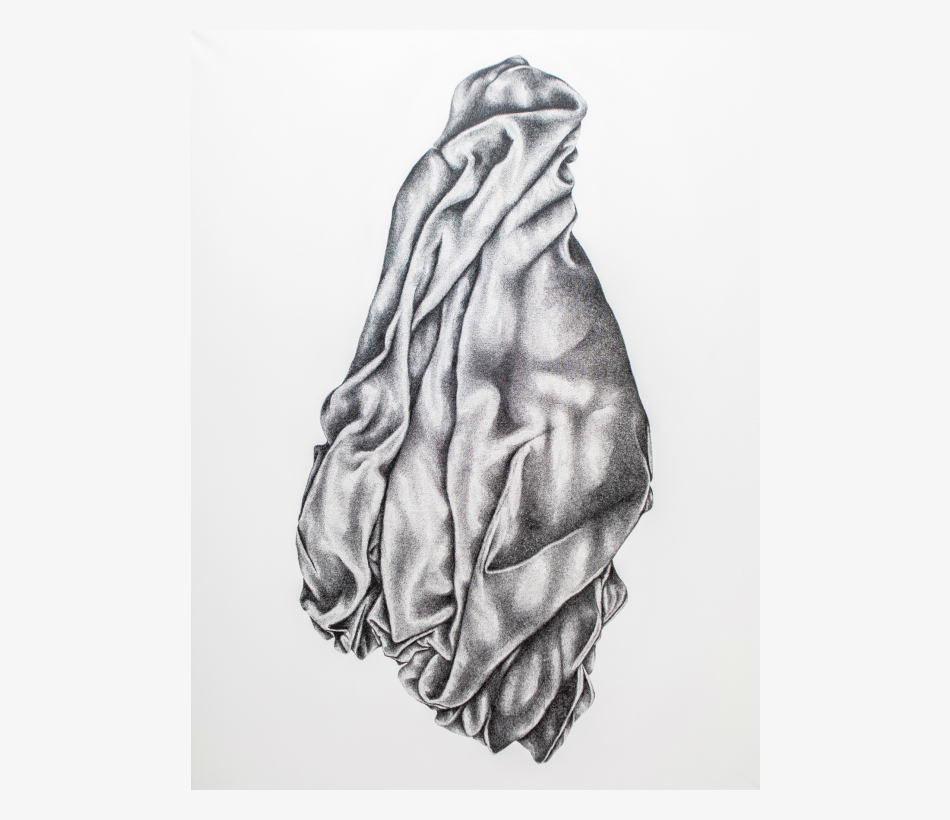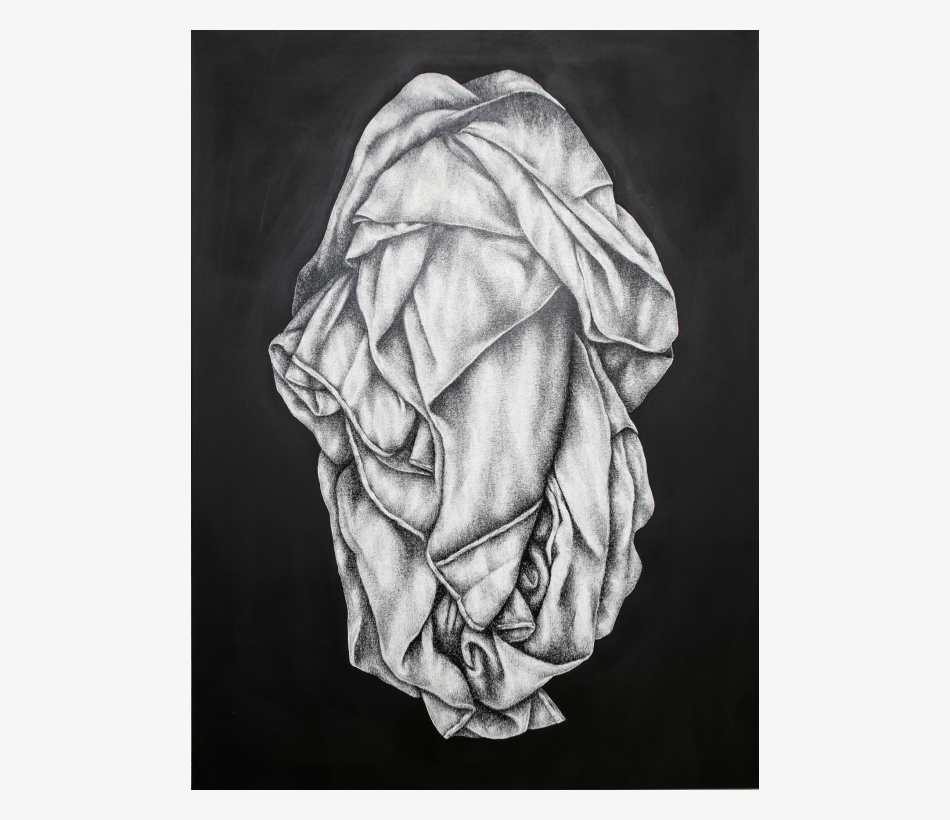Soli Kiani, who grew up in Iran, has lived in Vienna since 2000. In her art she depicts a critical retrospective view of her childhood and youth in her native Iran and discusses the position of women in the Muslim tradition. “Clothing, fabrics and fashion have played quite a dominant role in my life. The fabric that surrounded me didn’t just clothe me. It also provided a protective shell, while at the same time imprisoning my identity,” says Kiani. Political and social issues are expressed in Soli Kiani’s paintings and Cloth Sculptures through meticulous depictions of the fabric and its folds. Their starting point is her study of chador (tent) as a depersonalised piece of clothing that has simply been placed on the floor and which seems to deprive a person of their identity, yet also provides identity.
— Magdalena Koschat

